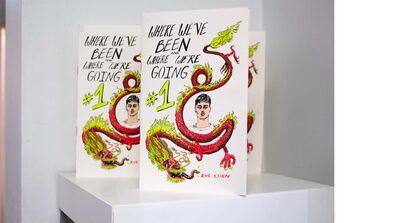
HPres Student John Smagner Featured on Houzz
I have always been interested in architecture and design, especially historic architecture and architectural styles. I grew up in the 80s building with Lincoln Logs and watching Bob Villa restoring historic homes on PBS. So, when I bought my home in 2013, I set out to accomplish two goals: 1. to experience, first hand, the process of restoring a historic home and 2. to create a comfortable home big enough to contain the large number of treasures I had amassed from family members over the years.
The process was exactly like I imagined it to be. It was sort of like being a detective and carefully looking for clues as to what was original to the house and what had been changed or added later. In the beginning, I relied on a few books about historic row houses and houses from the Victorian period to guide my work. And I toured a few historic house museums from the same period in which this house was built. Once inside, I began to identify where historic materials had been removed or altered in certain rooms, and I looked for clues in other parts of the house to determine what was original. That happened in the living room and dining room where the baseboards had been altered and the original picture rail had been completely removed. I looked to my neighbors' homes to determine which style of windows were original to this Victorian house. When I moved in the original double-hung wood windows had been replaced with fiberglass casement windows. Knowing casement windows would not have been installed in a home from the 1890s, I had them replaced with wood windows. Then I had to go through the process of matching the stain to the original woodwork in each room.
Even though the process was exactly how I imagined it to be, I was left with many unanswered questions. For example: What exactly is it that am I doing here? Is this restoration, rehabilitation, remodeling, or something else entirely? I began to suspect that each of these words must have a special meaning. There must be a precise definition for each of these terms. I spent 15 years teaching language to young children with autism; they taught me how important it is to be specific.
Furthermore, I began to wonder if there wasn’t an overarching framework or a set of guidelines or principles to help me make decisions with regard to my work on this house. Once I discovered a narrow cased opening between the living room and dining room had been removed to create a wider passage, I didn’t know if I should restore it to it’s original condition. Likewise, I wasn’t sure if I should remove original millwork in order to widen the doorway between the kitchen and the dining room. Should I install a high-end embossed wall-covering and a decorative floor in the hallway of a house that was probably a boarding house for workers at the nearby factories in the 1890s? Beyond personal preferences and relying on the contemporary practice of widening doors and creating open spaces, I began to wonder if there weren’t other guidelines that might help me.
And that’s how I ended up studying historic preservation at SAIC. After I looked at the department website and met with Anne Sullivan, I learned that this is exactly the type of program for someone like me who had these questions and struggled with how to approach his own historic house project. I was first trained as a research academic, so this program fits perfectly with my research skills and my desire to learn restoration design, materials conservation, and architectural history.
Read the full story about John's home on Houzz.
